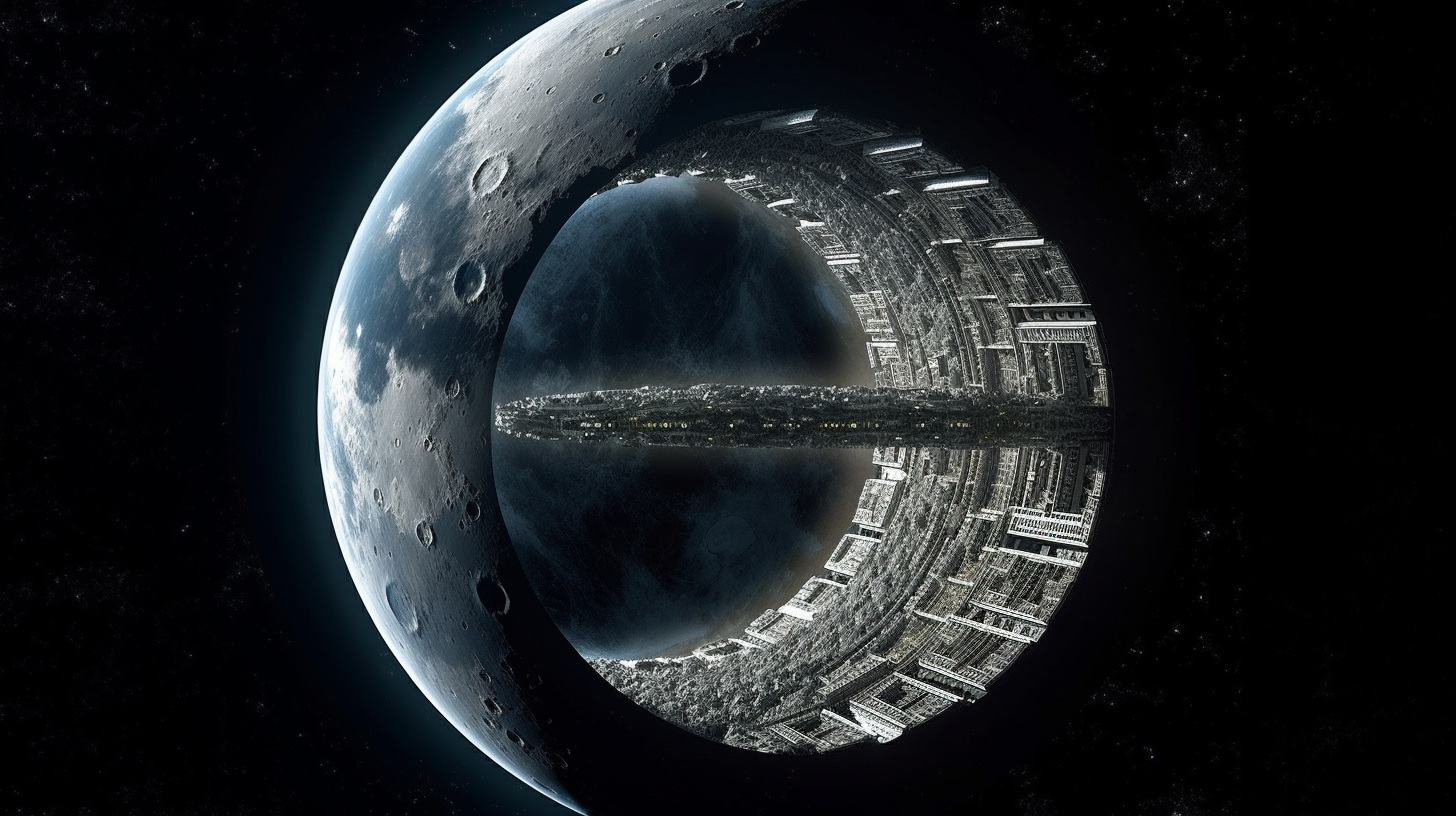Unraveling the Lunar Enigma
Throughout history, the moon has held a captivating allure for humanity. With its imposing presence in the night sky and enigmatic past, it has sparked a multitude of speculations and suppositions. Among these, the notion of a hollow moon has emerged, fascinating ancient astronaut theorists and inquisitive minds alike. This piece delves into the compelling assertions featured in the episode “The Hollow Moon” from Season 11 of the History Channel’s “Ancient Aliens.” We investigate the evidence and uncertainties surrounding this contentious concept that challenges traditional lunar science.
A Cratered Tapestry: The Moon’s Surface
The lunar surface bears the scars of a tumultuous history, adorned with tens of thousands of impact craters of varying sizes. Scientists attribute this lunar pitting to the lack of an atmosphere that could shield it from cosmic debris. Unlike Earth, the moon lacks erosive elements like wind and water, which could gradually erase these celestial battle wounds. Yet, it’s not just the sheer number of craters that puzzles researchers; it’s the consistent depth of these scars.

According to records from “Ancient Aliens,” lunar craters, both large and small, show remarkably uniform depths. In contrast, on a typical celestial body, one would expect variations in crater depths based on factors like impactor size and surface composition. This uniformity challenges established geophysics and prompts inquiries into the moon’s concealed depths.
The Enigmatic Lunar Shield
Ancient astronaut theorists propose a theory to explain the uniform crater depths on the moon: the existence of a resilient shield beneath its rocky exterior. This barrier, they hypothesize, could be an incredibly hard rock or a metallic sphere, preventing craters from penetrating deeper into the lunar surface.
However, this captivating notion raises a crucial question: why has mainstream science not endorsed it? Proponents argue that the implications of such a discovery are what deter acknowledgment. Acknowledging a metallic or dense layer beneath the lunar surface could imply a startling conclusion: the moon may be hollow.
The Lunar Bell Tolls
An intriguing piece of evidence arises from the Apollo missions. During the Apollo 12 mission on November 20th, 1969, astronauts deliberately crashed the launch vehicle into the moon’s surface. The outcome was astonishing: the moon began resonating like a colossal bell, a phenomenon captured by seismographs for over an hour.
Subsequently, during the Apollo 13 mission, a heavier part of the rocket was crashed into the moon, causing it to “ring” for over three hours and to a depth exceeding 20 miles. This unexpected seismic resonance continues to confound experts and deviates from their initial expectations.
The Theory of a Hollow Moon
The moon’s predominant composition consists of lightweight basalt rocks. While these rocks absorb impacts efficiently, they should not elicit such pronounced seismic resonance. This peculiar reaction of the moon’s surface has led some to propose that the moon’s interior is hollow or contains voids and cavities.
Watch the Video:
Concluding Thoughts on the Lunar Mystery
The concept of a hollow moon challenges our comprehension of planetary physics and calls for further exploration. While mainstream science remains skeptical, the compelling evidence put forth by ancient astronaut theorists cannot be easily dismissed. As humanity continues to venture into the unknown expanses of the cosmos, enigmas like the moon’s cryptic nature serve as a reminder that there is still much beyond our earthly boundaries waiting to be unveiled. Whether the moon is hollow or not, it stands as a testament to the enduring allure of space exploration and the boundless opportunities for discovery beyond our home planet.
